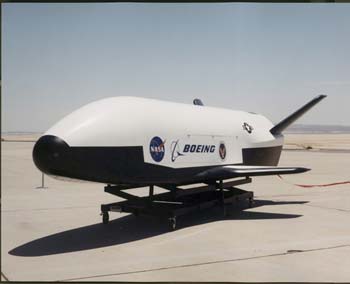Avi Blizovsky

https://www.hayadan.org.il/evacuateiss.html
NASA Administrator Sean O'Keefe said Thursday (5/12/2002) that he remains committed to the construction and expansion of the International Space Station, despite Washington's decision last year to cut the project's budget.
By 2006, O'Keefe said, the size of the space station's permanent crew will double from three to six. The NASA leader met on Friday with senior officials from the other countries participating in the space station, Russia, the European Union, Canada and Japan.
NASA has recently come to the conclusion that the current crew manning the space station, numbering only three people, is not able to carry out almost any serious research work (the International Space Station was originally developed to serve as a place for scientific and technological research) and that a crew at least twice the size is needed to carry out the missions the study. To this end, representatives of NASA and the other member states of the space station project recently met in Japan and agreed that in 2006 the number of Soyuz spacecraft permanently stationed at the space station will be increased to two. This is actually possible even now because in the Russian module of the space station there are three docking bays for Soyuz spacecraft (one is usually used for the docking of supply spacecraft. By the way, the space shuttles that arrive at the station dock in the American module and not the Russian one).
What was not agreed upon at the meeting is where the funding will come from to double the number of Soyuz spacecraft. In any case, if funding is found in the future, it is possible and within a few years the space station will finally begin to fulfill its original role.
O'Keefe said it was too early to say how many additional teams would be needed by then, but said the team would be larger than three. The Khal station is expected to reach full operation between 2008-2010. Cuts in the Russian space agency's budget could slow down the construction of the station, but O'Keefe says that Japan is at least fulfilling its obligations in full.
Japan, which has committed to allocating $2.6 billion, is the second largest investor after the U.S. Japan also built five major components for the space station, including an external robotic arm and a medical laboratory.
For news in New Scientist
30/11/2002
A strategy for evacuating the International Space Station and leaving it in a manned cradle for about a year is planned by NASA.
At NASA, there are growing fears that Russia will not be able to finance the construction of a spacecraft needed to maintain a permanent crew on the station in 2003. The construction plan for the Soyuz spacecraft that will be used to transport astronauts, and the Progress spacecraft to bring cargo to the station are behind schedule. NASA tells the public that they hope that Russia will fulfill its commitment.
However, internal NASA documents revealed by space expert James Oberg state that the sequence of tasks necessary to ensure that the right crew is in the right place at the right time is needed to allow the evacuation of the permanent crew, and also allows a space shuttle to visit the station for a period of 10-12 days to continue the necessary construction and repairs.
The International Space Station has been permanently manned for over two years and the termination of this streak would represent a major failure. The main purpose of the station is to be used for scientific research, but this activity will be stopped during the evacuation.
The amount of experiments carried out at the station has already been significantly reduced because the station's permanent staff has been limited to three people. This is the capacity of a Soyuz spacecraft used as a lifeboat. NASA failed to meet the schedule for building the International Space Station's escape vehicle designed for a crew of six or seven people.
However, progress toward building the rescue ship came this week when NASA provided Boeing with $301 million to continue developing the X-37 through 2006. The X-37 will be the starting point for the space plane that NASA has announced it plans to use as a rescue ship. to the space station, and finally even as a replacement for the space shuttles.
Either way, the space plane will arrive too late to solve the Russian spacecraft problem. The existing plan talks about a serious scale unmanned flight of a Delta 4 rocket that will bring the space plane to the space station. Manned flights will not begin before 2012.
However, many technologies remain unproven and need to be solved before flight. "The X-37 is designed to demonstrate capabilities that will later be applied to a space plane," said Al Santana, X-37 program manager and senior executive at Boeing. Boeing started the X-37 project in 1999 and has so far demonstrated an independent landing in a version about eighty percent larger - the X-40A. During 2004 a test landing of a full-scale X-37 is planned - for every 8.4 meters height and a wingspan of 4.6 meters.
During 2006, another powered X-37 rocket will be loaded onto the upper stage of a Delta 2 rocket - a change to the original plan to use the Space Shuttle to launch it into space. Plans call for the X-37 to operate independently in space for 21 days, then reenter the atmosphere at Mach 25 and land on its own.
Boeing will study the test results and feed them into the orbital space plane program, Santana said. He predicts that the space plane will be at least one and a half times larger than the X-37.
One key issue will be the engineering and the autonomous control system will allow astronauts to intervene. “Once you have a team on board, you have a natural tendency not to trust software when human lives are at stake.
For news in New Scientists
https://www.hayadan.org.il/BuildaGate4/general2/data_card.php?Cat=~~~385990409~~~88&SiteName=hayadan
